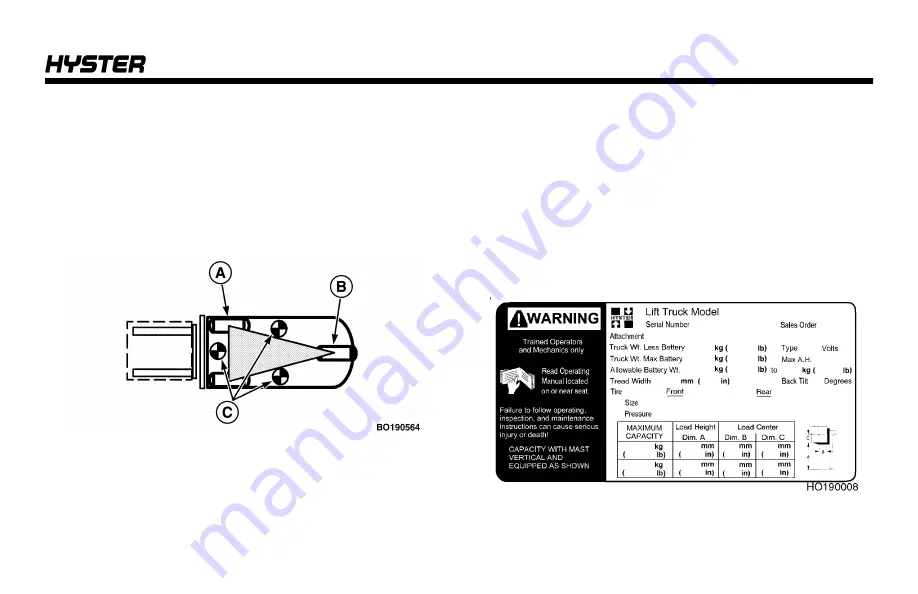
on an incline. These factors must be considered when trav-
eling with an unloaded truck, as well,
because an unloa-
ded truck will tip over to the side easier
than a loaded
truck with its load in the lowered position.
In order for the lift truck to be stable, not tip over forward or
to the side, the CG must stay within the area of the lift truck
represented by a triangle drawn between the drive wheels
and the pivot of the steering axle.
A.
DRIVE AXLE
B.
STEERING AXLE
C.
CG - TRUCK WILL TIP OVER
If the CG moves forward of the drive axle, the lift truck will
tip forward. If the CG moves outside of the line represented
by the lines drawn between the drive wheels and the steer-
ing axle pivot, the lift truck will tip to that side.
Capacity (Weight and Load Center)
The capacity of the lift truck is shown on the Nameplate.
The capacity is listed in terms of weight and load center.
The weight is specified in kilograms and pounds. The load
center is specified in millimeters and inches. The capacity
is the maximum load that the lift truck can handle for the
load condition shown on the Nameplate.
The load center of a load is determined by the location of
its center of gravity. The load center is measured from the
Operating Procedures
81
Property of American Airlines

































